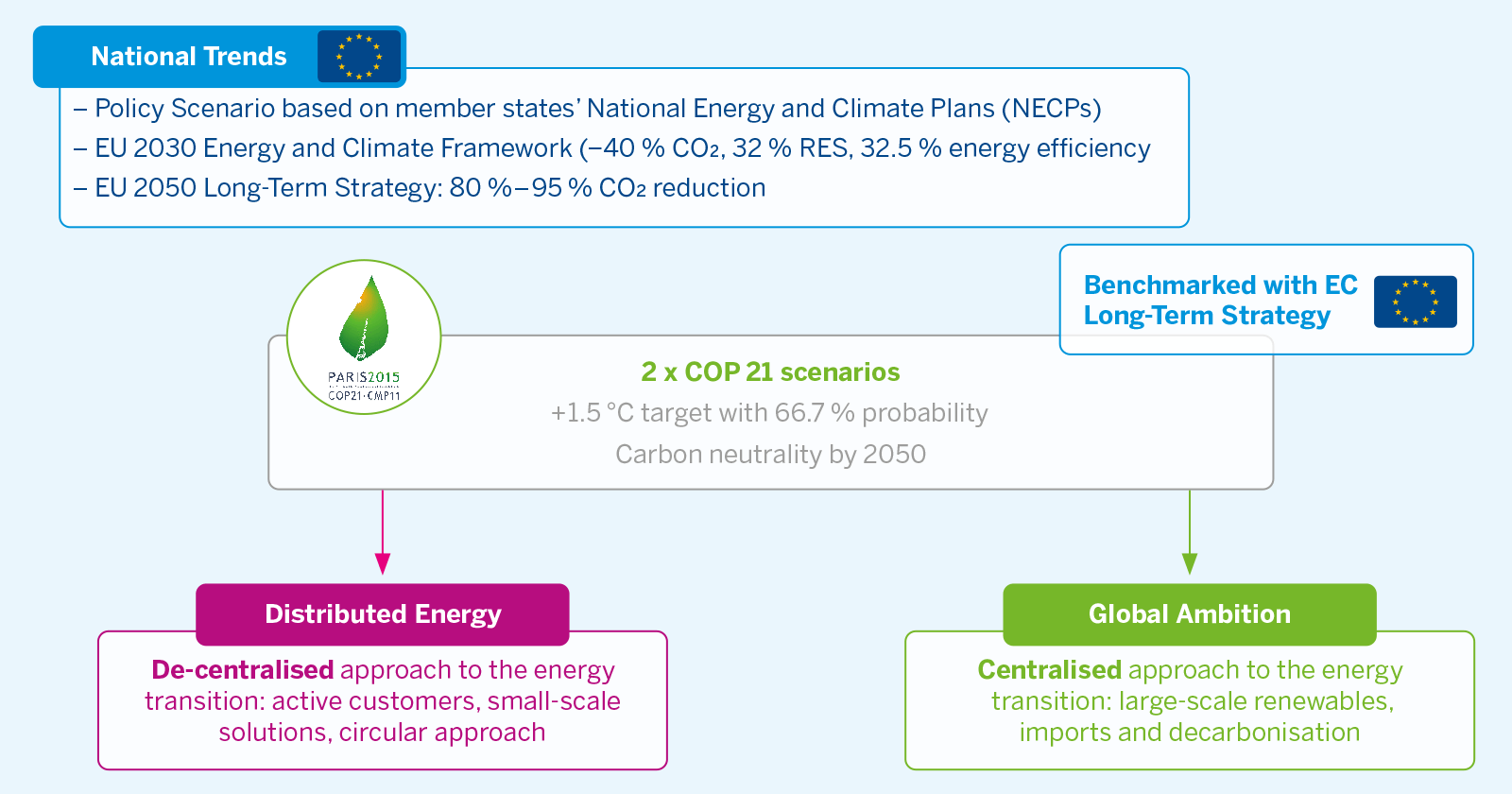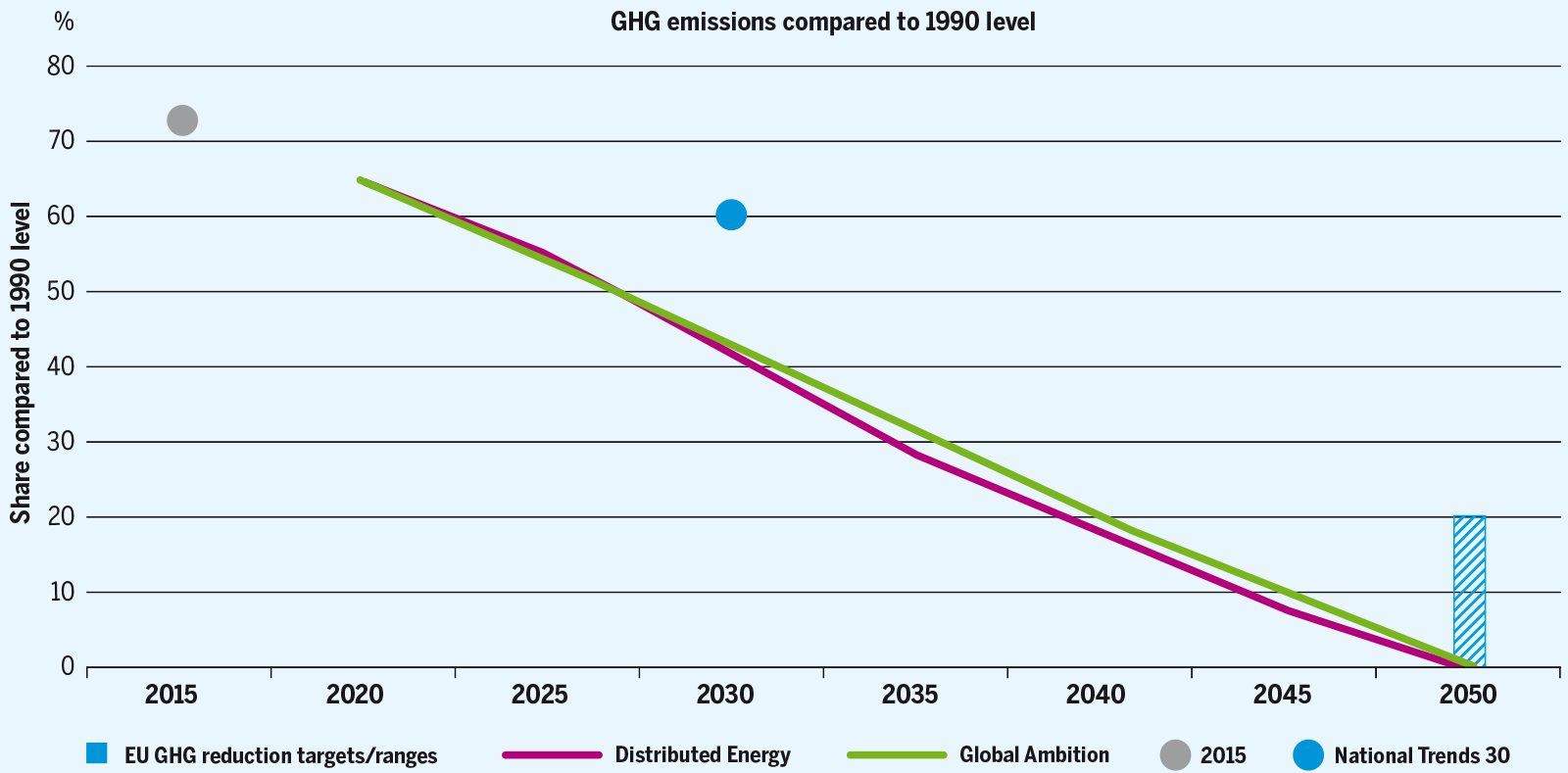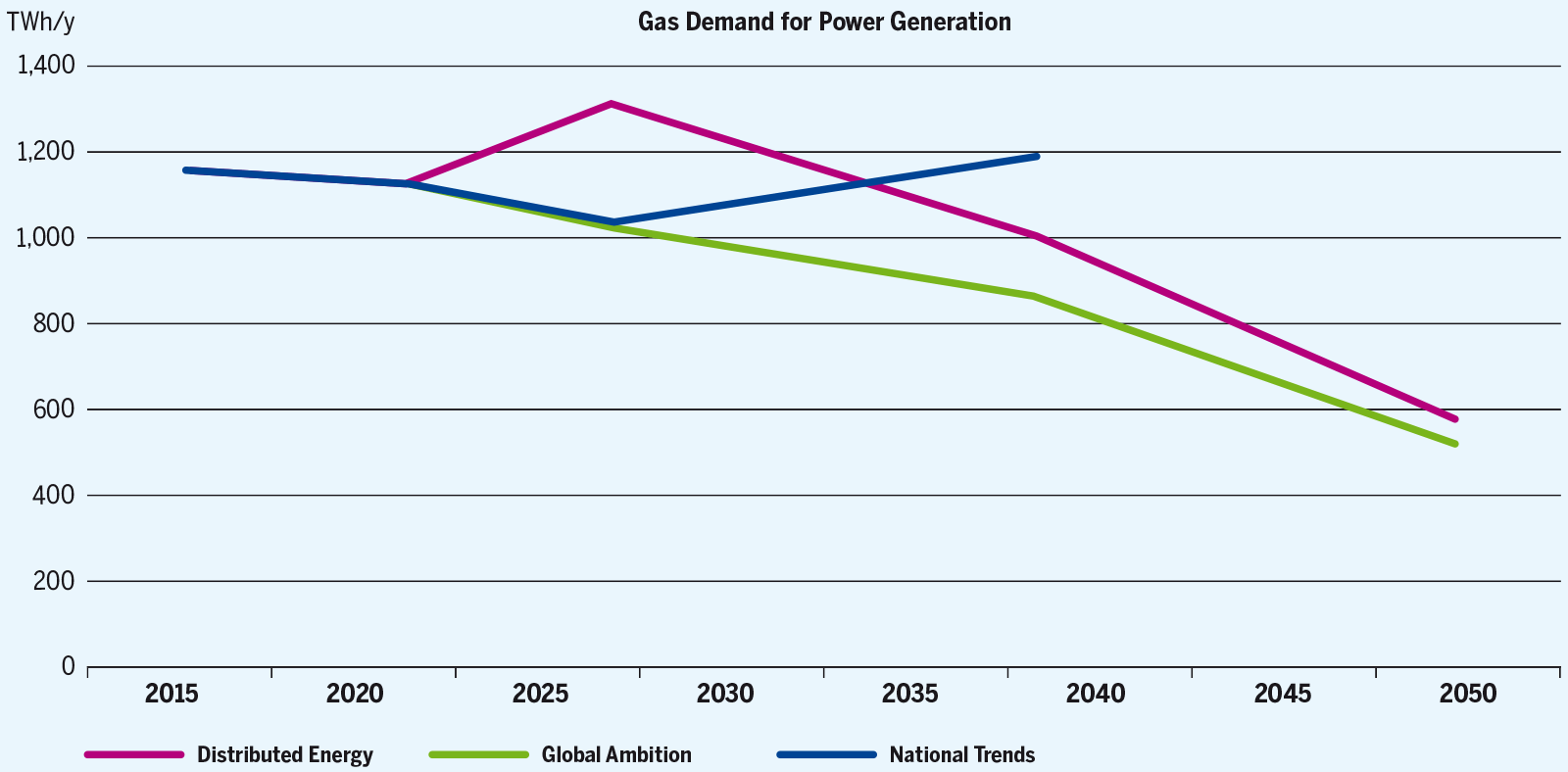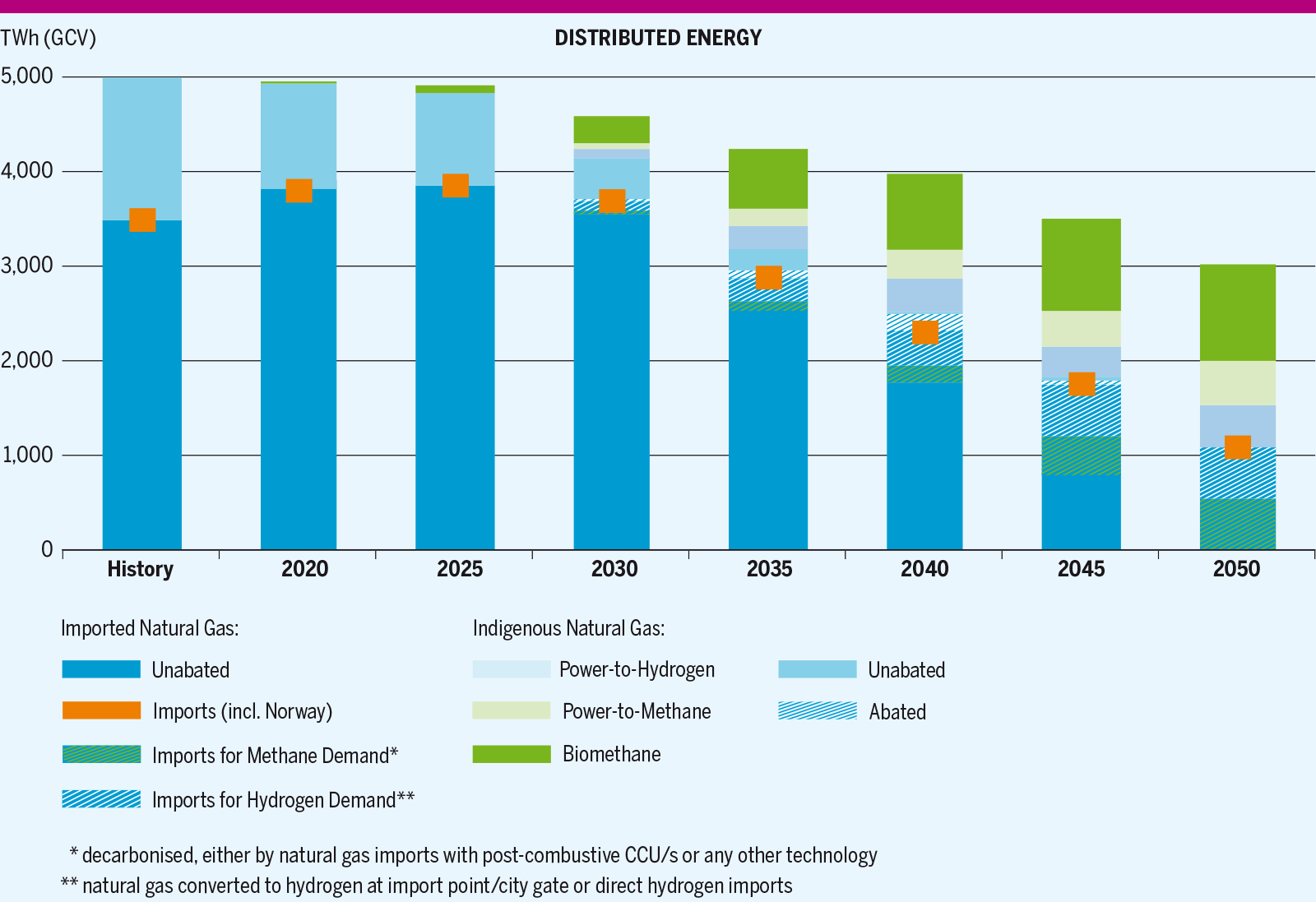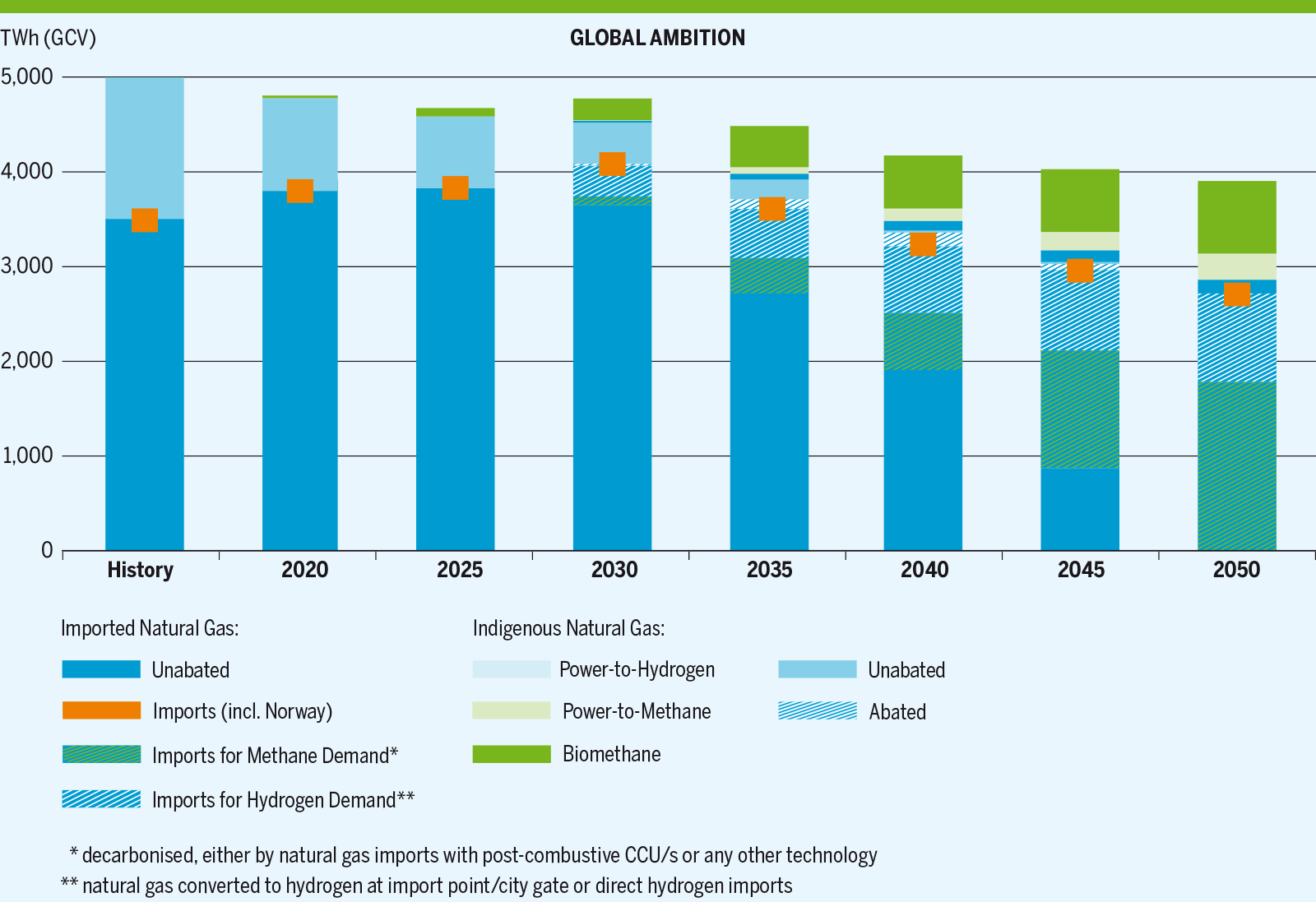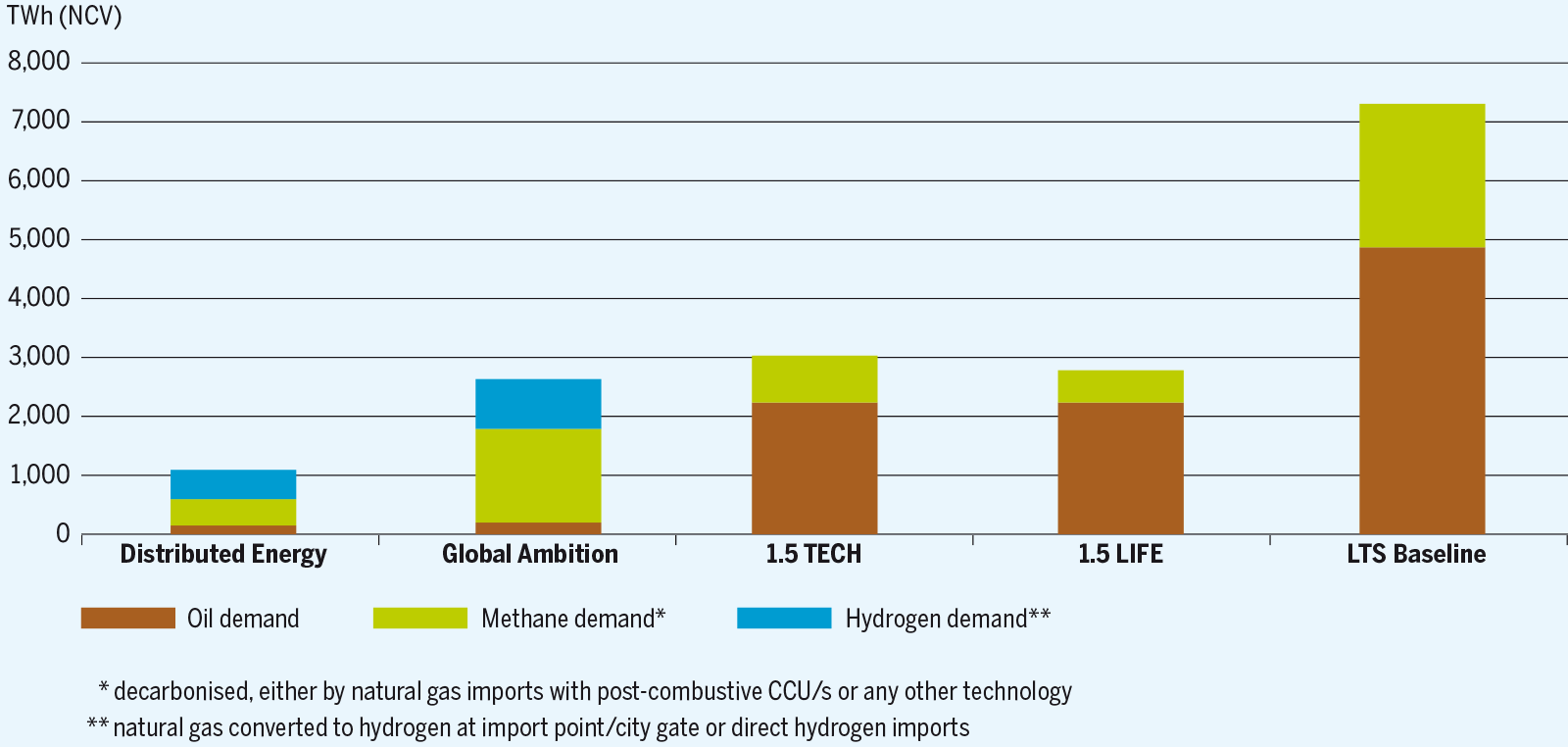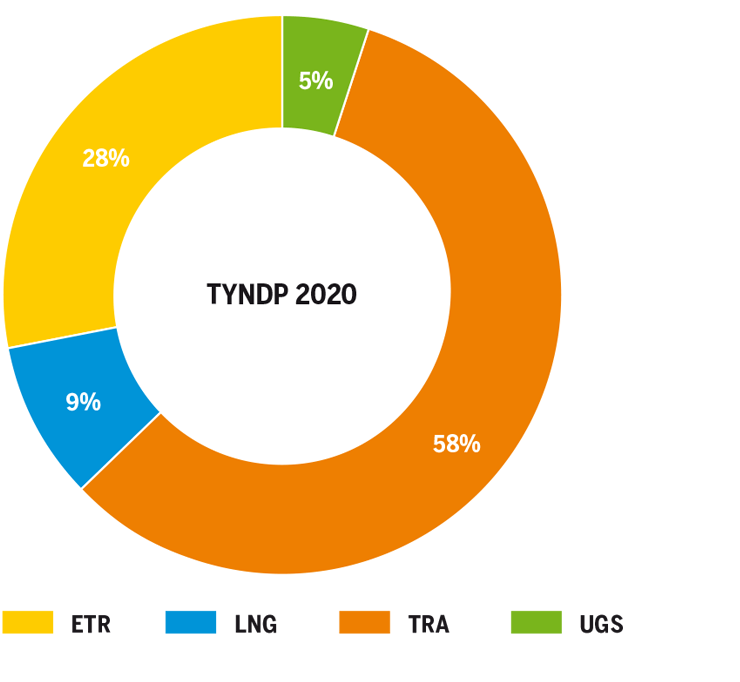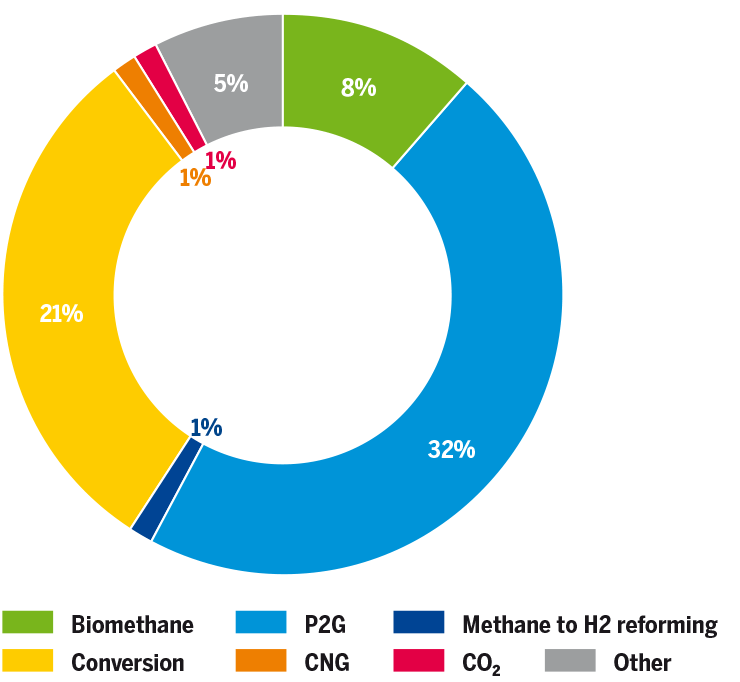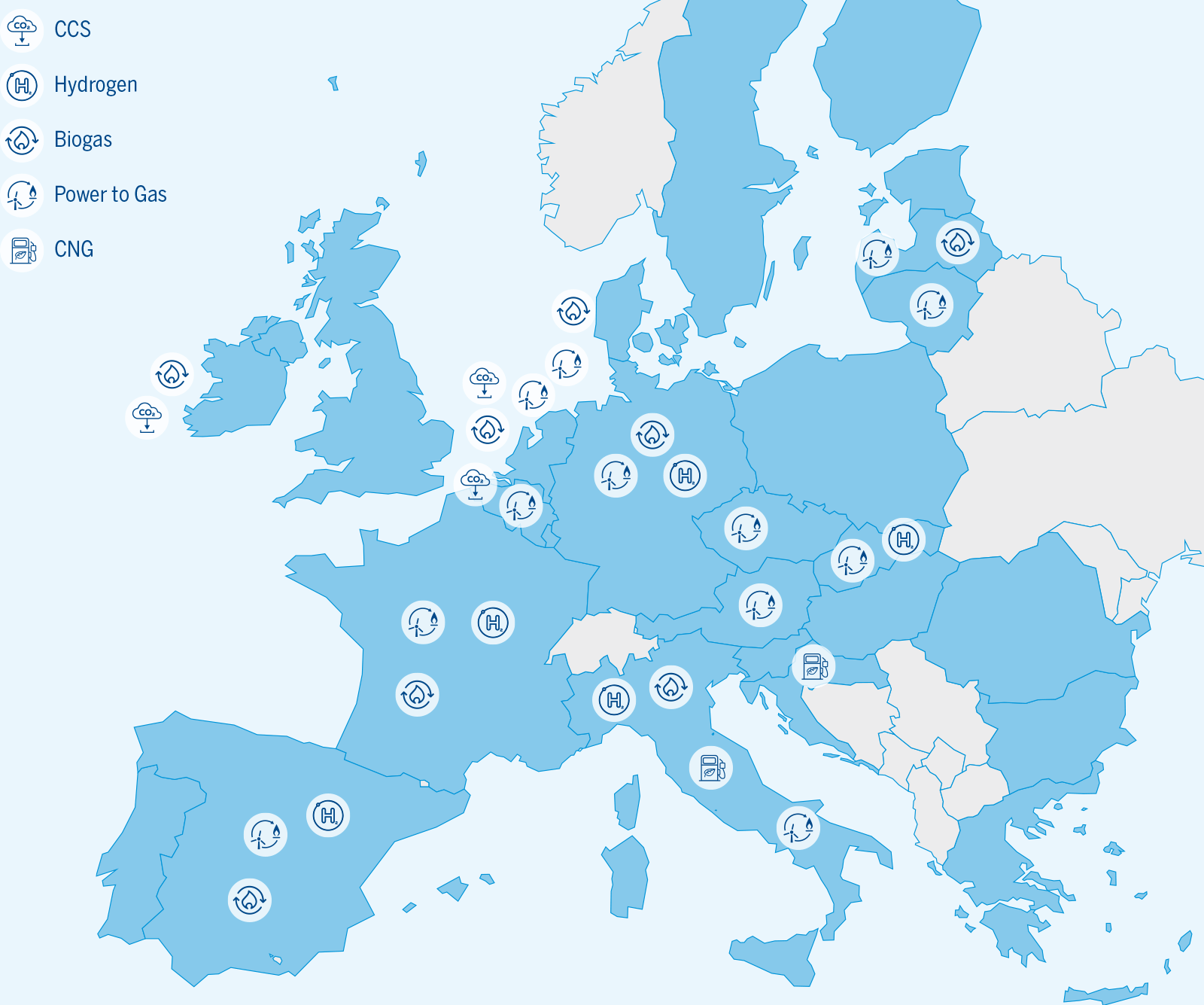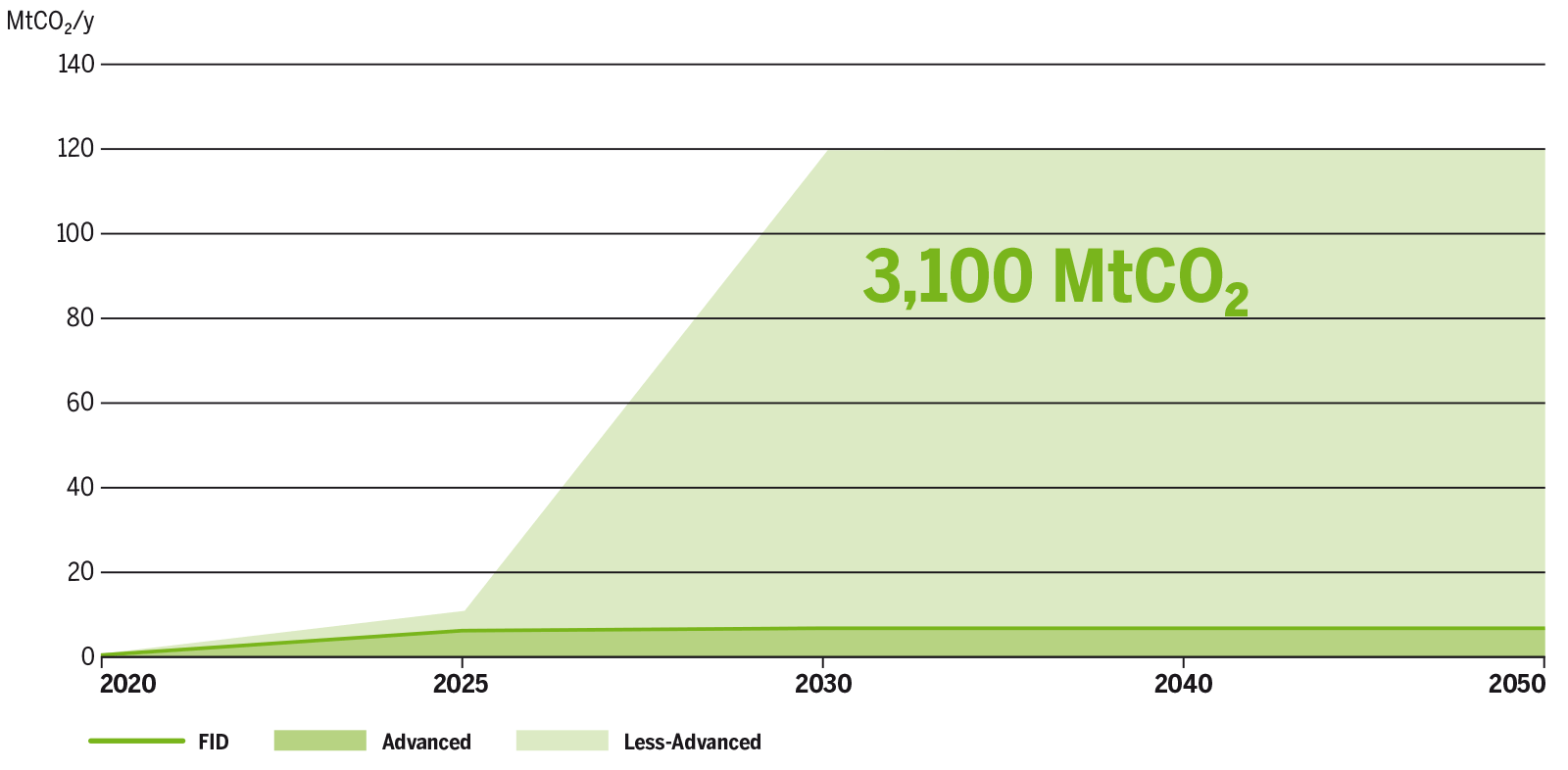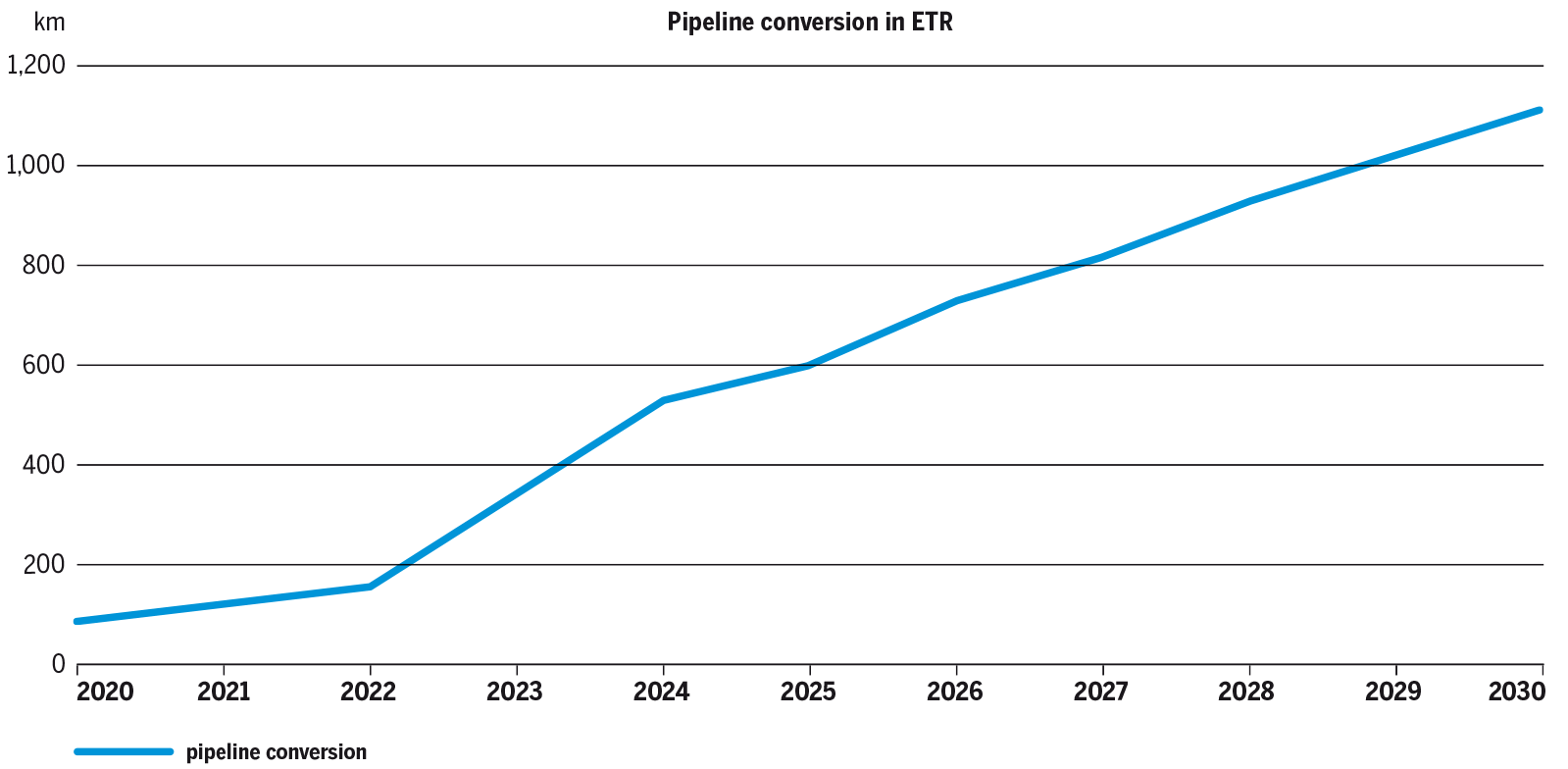3.1A sustainability oriented TYNDP
TYNDP 2020 scenarios support the European climate ambitions
TYNDP 2020 assesses the European infrastructure gaps against sustainability-oriented scenarios considering either national policies as defined by the Member States’ National Energy and Climate Plans (NECPs) or the objectives as defined in the Paris agreement (COP 21). All scenarios therefore comply with European and national ambitions.
Furthermore, building on the ever-improving interlinked model developed jointly by ENTSO-E and ENTSOG, the COP 21 scenarios – Distributed Energy and Global Ambition – are built on a holistic approach to the European energy system considering the total primary energy mix of Europe to ensure consistency across all sectors, beyond considering the sole interactions between gas and electricity.
3.2Towards a carbon neutral energy system by 2050
TYNDP 2020 assessment reflects the infrastructure needs to reach a net-zero energy system in Europe by 2050. Furthermore, the COP 21 scenarios reach carbon neutrality in 2050 within a carbon budget of 61 to 64 GtCO₂, comparable to the EU Long-Term Strategy defined by the 1.5 Life and 1.5 Tech scenarios of the study “A clean Planet for all”.1
| < 2050 | 2050 | > 2050 | |
|---|---|---|---|
| Energy and non-energy related CO₂ emissions | 57.1 GtCO₂ | Carbon Neutrality | Additional measures needed, e. g.: LULUCF, BECCS, CCS, DAC |
| Non-CO₂ GHG emissions (including methane and Fluorinated gases)* | 17.7 GtCO₂ | ||
| Carbon sinks** | – 13.4 GtCO₂ | ||
| Net cumulative emissions | 61.4 GtCO₂ | – 13 GtCO₂ |
* Data for methane and fluorinated gases emissions is taken from the European Commission’s most ambitious 1.5 Tech and 1.5 Life scenarios (average) as published in the “A Clean Planet for all”-Study
** Data for LULUFC is taken from the European Commission’s most ambitious 1.5 Tech and 1.5 Life scenarios (average) as published in the
“A Clean Planet for all”-Study
Figure 3.2: TYNDP 2020 scenarios: decarbonisation pathways*
One source of clean energy cannot do it all: gas needs electricity and electricity needs gas
Both gas and electricity systems are interdependent to reach a carbon neutral energy system. Together with biomethane, gas needs renewable electricity to produce the large amount of clean hydrogen anticipated by the European Hydrogen and Energy Sector Integration (ESI) strategies and developed in both TYNDP 2020 COP 21 scenarios. Furthermore, the electricity system increasingly needs clean gas (methane and hydrogen) as a necessary source of energy to produce electricity, especially to support and back-up the necessary development of significant capacities of intermittent renewable power generation2. Moreover, scenarios with higher electrification show an increasing demand for clean gases and are also more exposed to Dunkelflaute events3.
2 For further details on gas demand available see TYNDP 2020 scenario report https://www.entsos-tyndp2020-scenarios.eu/
3 “Kalte Dunkelflaute” or just “Dunkelflaute” (German for “cold dark doldrums”) expesses a climate case, where in addition to a 2-week cold spell, variable RES electricity generation is low due to the lack of wind and sunlight.
One technology cannot do it all: renewable and decarbonised gases are both needed
Along with energy efficiency improvements, the development of renewable energy capacities is necessary to reach carbon neutrality by 2050. However, even with more ambitious development trajectories for wind and solar in Distributed Energy, both COP 21 scenarios show a need for decarbonisation technologies (production of hydrogen from natural gas with CO₂ or solid carbon capture) to reach carbon neutrality in 2050, and additional CO₂ capture technologies (e. g. LULUCF, BECCS, CCS, etc) for “hard-to-decarbonise” processes as well as to compensate for the extra amount of CO₂ the EU will emit in the meantime reaching net-zero in 2050.
Quick wins are essentials: fast is more efficient
As the amount of CO₂ emitted by the EU will depend on how fast renewable and decarbonisation technologies will develop, quick wins are essentials. The quicker the cut in CO₂ emissions, the lower the need for decarbonisation capacities. The electricity model used by ENTSO-E and ENTSOG to build the scenarios show that an immediate coal-to-gas switch in the sole power sector could already save more than 85 MtCO₂ per year (more than total CO₂ emissions of Austria) without new investments. Additional potential exists in other sectors such as heating, industry and mobility.
Import capacities are key to ensure the transition and security of supply
COP 21 scenarios show limited energy import needs compared to the EU Long-Term Strategy scenarios. However, the TYNDP 2020 assessment confirms the need for gas import capacities to ensure the transition (production of decarbonised energy besides the development of renewable technologies) and to ensure the security of energy supply (see Security of supply chapter).
3.3TYNDP 2020 is looking forward
To support Europe in its Climate and Energy ambitions, ENTSOG made the choice to collect and assess projects contributing to the decarbonisation of the gas system on a transparent and non-discriminatory basis.
Development of clean gases is necessary
TYNDP 2020 scenarios show that reaching a net-zero economy by 2050 must result in energy efficiency improvements and a generally decreasing trend for the overall gas demand. However, as the European energy system goes more and more decarbonised, the gas demand is sustained by energy intensive sectors such as power generation, industry, heating and transport, where the high energy density of gas and its efficient storage and transmission are key assets.
Therefore, an adaptation of the energy infrastructure is necessary to develop significant production capacities of renewable and decarbonised gas, and to adapt the demand to new gases, notably hydrogen. Such projects are not covered by the current TEN-E regulation and are introduced for the first time by ENTSOG in TYNDP 2020 in addition to the project categories already covered by the regulation.
TYNDP 2020 assesses gas projects participating to the decarbonisation of the European energy system
In addition to the usual projects (transmission, storage and LNG) reinforcing the infrastructure backbone of the European gas market and supporting the displacement of more carbon intensive fuels (e. g. coal phase-out in heating, power and industry, or oil phase-out in the transport sector), ENTSOG collected Energy Transition projects (ETR projects) to assess additional gas infrastructure projects meant to decarbonise the European energy system.
The ETR projects generally connect to the transmission infrastructure either upstream by producing/enabling renewable or decarbonised gases, or downstream by adapting/enabling the energy demand to new gases or to displace more carbon intensive fuels with decarbonised gases. Furthermore, a number of ETR projects are also related to the repurposing of existing infrastructure to carry hydrogen.
Energy Transition projects category already accounts for more than 25 % of TYNDP 2020 projects
Although the ETR category has been just created for TYNDP 2020 and project submission was done on a voluntary basis, Energy Transition projects represent 28 % of all projects submitted to TYNDP 2020.
Various types of projects have been submitted and they cover the entire spectrum of the necessary categories identified in the TYNDP scenarios. See Figure 3.8.
Upstream
The vast majority of ETR relates to renewable gas generation capacities (Power-to-gas and Biomethane) and decarbonisation (methane to H₂ reforming, CCU/S).
Midstream
The significant number of Conversion projects (30 %) for the adaptation of the existing infrastructure to Hydrogen is consistent with the development of Hydrogen production capacities.
Downstream
This category of projects to adapt and develop the demand is the least represented and is expected to increase with the further development of TSO-DSO cooperation.
First ETR projects submitted to TYNDP 2020 contribute significantly to the decarbonisation of the energy system, but more projects are needed
All ETR projects participate to reducing the CO₂ emissions of the energy system. However, the first list of projects – submitted by their promoters on a voluntary basis – is far from being comprehensive and many other projects that were not submitted could bring additional support towards reaching the climate and energy targets of the EU.
Many ETR projects show they will take some time to materialise, which confirms the need for quick-to-implement solutions to decrease the carbon intensity of the European energy mix as soon as possible and limit the need for additional CO₂ capture solutions post net-zero in 2050.
Indeed, both COP 21 scenarios reach carbon neutrality in 2050 with a carbon budget of approximately 61 to 64 GtCO₂, in line with the European Long-Term Strategy published in the study “A clean planet for all”4. However, depending on the total carbon budget defined for the EU until 2100, additional measures are needed after 2050 to go even further to capture additional CO₂ to stay within a COP 21 compliant CO₂ budget to limit the temperature increase to + 1.5 °C.
Therefore, quick wins such as coal to gas switch, penetration of gas in carbon intensive sectors and the early implementation of decarbonisation and renewable projects will support both reaching the net-zero target of 2050, but equally limit the need for additional carbon-negative measures post-2050. See Figures 3.9 and 3.10.
ETR projects evaluated in TYNDP 2020 could save more than 3,100 MtCO₂ till 2050
Figure 3.9: CO₂ savings generated by ETR projects in TYNDP 2020
More than 1,000 km of pipeline retrofitting submitted to TYNDP 2020 for the next 10 years
For the first ETR projects collection, around 1,100 km of pipeline retrofitting has been submitted to TYNDP 2020 and they concern only France and Germany. According to some TSOs studies, the potential retrofitting activity could reach 6,800 km by 20305.
3.4Conclusion
Gas is part of the solution towards net-zero 2050
TYNDP scenarios confirm the need for various renewable and decarbonisation technologies and the interdependence of the gas and electricity systems in reaching a net-zero European energy system by 2050.
Indeed, as the energy transition will create a change in the use of primary energies depending partly on the level of electrification and on whether it is produced locally or centralised, gas as an energy carrier has a necessary and key role to play and needs to be decarbonised.
ETR projects will drive the decarbonisation
With the creation of the Energy Transition project category, ENTSOG collected a non-comprehensive but still significant list of projects reflecting the wide variety of solutions needed to decarbonise the energy sector, from renewable generation to demand conversion including CO₂ storage and infrastructure conversion. Out of the 70 ETR projects submitted to TYNDP 2020, the 40 projects evaluated can save more than 3,100 MtCO₂ (see Figure 3.9). Since the ETR projects collection is not a regulatory requirement, they were submitted to ENTSOG on a voluntary basis. Therefore, the assessment is not comprehensive and the impact of the assessed ETR projects can be considered the very tip of the iceberg.
Quick wins are no regret options
The carbon budget approach considered in the COP 21 scenarios show that the later the transition happens, the more you need to compensate for CO₂ emissions after reaching net-zero. Therefore, quick decisions made today can save a lot compensation measures after 2050.
With no further investments and no matter in which scenario, coal to gas switch can be implemented today and save more than 85 MtCO₂ per year (more than the total CO₂ emissions of Austria), and other solutions already exist to quickly replace relatively higher carbon intensive fuels with gas in carbon intensive sectors such as industry and heating or in sectors where the energy needs to be stored and transported like mobility, including train, shipping and aviation.
The transmission infrastructure as backbone to integrate clean gases and support an efficient energy market
As production capacities of clean gases need to scale up, renewable gases – like offshore power to gas – will be produced further from the consumption areas and will be unevenly distributed throughout Europe, depending where the best potential is located. The most recent ETR projects demonstrate that the existing gas infrastructure can already connect the production or import facilities to the consumption areas, and thus to the storages to cope efficiently and securely with the energy demand seasonality. ETR projects also include conversion projects when the integration of clean hydrogen requires an adaptation of the existing infrastructure.
What’s next?
ENTSOG is adapting its project-specific assessment methodology to include ETR projects and deliver standard assessment for those projects in case they would be eligible for further PCI selection processes.
In the meantime, for the 5th PCI process, ENTSOG has implemented the recommendations of the European Commission to compute the CO₂ savings to be allocated to transmission, underground storage and LNG projects when they support the displacement of more carbon intensive fuels.


